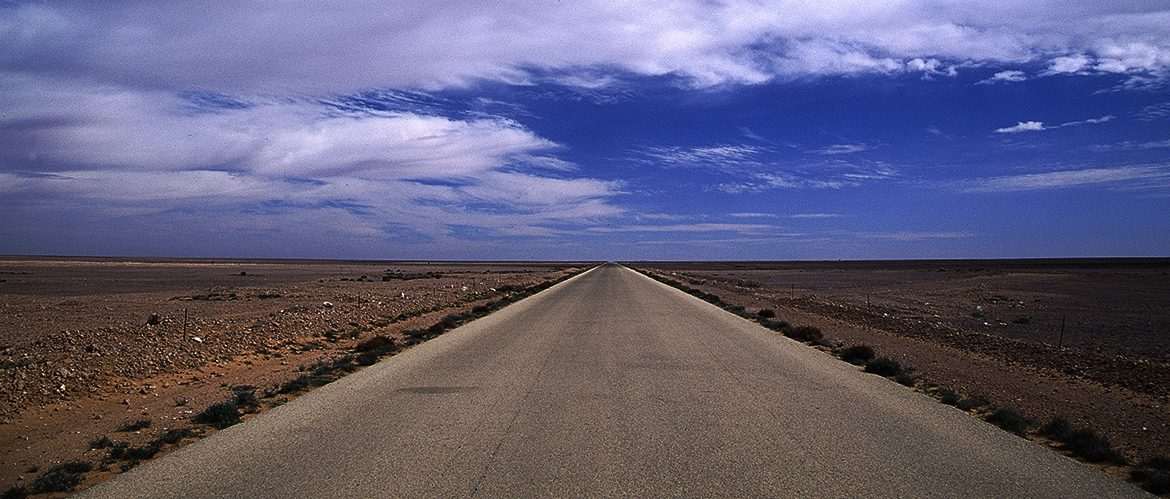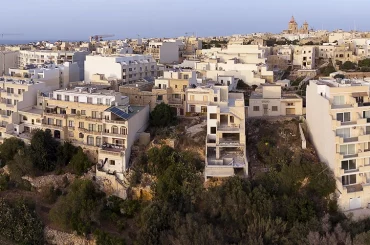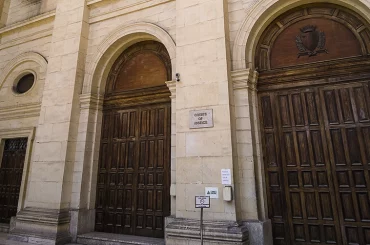The war on Ukraine has radically altered the EU’s strategic sensibility, and set the EU on the development of a security and strategic construct that a year ago would have been dismissed as political futurism.
It is a strategic thinking that began with the onset of the COVID pandemic, when the EU faced shortage of basic medical products such as medical gowns and face masks, which have been produced in east Asia. Then the war on Ukraine exposed the EU’s vulnerability of being reliant to a large degree on Russian oil and gas.

Three months after the invasion began, the EU launched the REPowerEU plan, which is based on three measures – expedite development of renewable energy, save energy, and diversify energy supplies. The EU has put €300 billion on the table to fund the REPowerEU aims.
In Malta’s neighbourhood, this provides greater possibility of funding to tap renewable energy sources to the south of Malta, principally Tunisia and potentially Libya (dependent on security situation), to develop solar power stations in the Sahara Desert and then transmit the electricity to Europe via undersea interconnector cables.
Research shows that Malta was, or is, already part of a plan of a company called TuNur, which is developing electricity in solar plants in the Tunisian desert. The plan is for two interconnectors, one to Malta and the second to a landing point north of Rome. The interconnector to Italy, set to have a capacity of 2,000MW, is scheduled to be completed by 2028. It’s not clear at what stage of planning or execution is the interconnector to Malta – or whether it is still active – which is planned to have a capacity of 400MW (Malta’s total electricity needs average at 438MW).
An interconnector to Malta could serve some of Malta’s needs or even allow Malta to export electricity to Sicily via the interconnector that already exists between Malta and Sicily (a second, parallel Malta-Sicily interconnector is currently being built – more on this later).
In a further dramatic development, two months ago Italy became the first country to get funds from the EU’s Connecting Europe Facility (CEF), set up in 2014, to build a high-voltage interconnector with a country outside of the EU. Italy got €307 million to build the interconnector that will have a capacity of 600MW stretching from Tunisia to the west of Sicily.
These led Italian Prime Minister Giorgia Meloni to say three weeks ago that Italy is positioning itself to become an energy hub for the EU, partly by tapping renewable energy produced in the Sahara and transmitted across the Mediterranean. Meloni also mentioned the production of hydrogen, which is emerging as another source of energy.
Malta could similarly be more ambitious in positioning itself as a mini-hub or bridge in transmission of electricity from countries to the south. And this not only means seeking opportunities for funding, but also perhaps playing a more involved role in the development of solar power plants in North Africa.
Libya presents the most obvious opportunity for Malta as well as for the development of solar energy plants. This is because Libya has better geographic conditions: it has more flat desert land than Tunisia, and such land is closer to the coast (water is needed to keep the panels clean) – but of course the current security situation in Libya remains a hindrance.

What is sure is that resource is vast: researchers writing in The Conversation maintained that “just a small portion of the Sahara could produce as much energy as the entire continent of Africa does at present.”
There are two possible systems: solar farms of photovoltaic panels, or mirrors (or lenses) that reflect the sun towards a central tower that produces electricity through steam turbines (this is called concentrated solar power). The latter seems to be the better option for the Sahara Desert, but the technology remains complex and there is a need for water to keep the mirrors or lenses clean. The desert has little, finite water resources, and the solution would be to produce water by reverse osmosis plants on the coast – Malta has long experience building and running such plants.
Photovoltaics similarly need water to keep them clean and their efficiency drops if they become too hot (temperature in the desert becomes very hot in summers). Recent studies have also found that covering large parts of the Sahara Desert with photovoltaics can alter regional or even global climate as the panels make their surroundings hotter.
But we are not talking about producing enough electricity from solar power in the Sahara to fulfill all of Europe’s needs. We are talking about a cluster or scattering of solar plants that could become part of the energy mix.
The funding of the connector between Sicily and Tunisia means that the EU would possibly be favourable towards funding additional interconnectors between Malta and north Africa, as this would enable greater capacity of electricity transmitted across the central Mediterranean via more than one interconnector.
Having more than one interconnector across different routes could be attractive because the transmittable load can be divided between different interconnectors and routes, something that would limit the impact of potential accidents, faults, or sabotage. (There has been much chatter in the past year about the potential for Russian sabotage of undersea cables or pipelines – such attacks could potentially cripple parts of Europe.)
Moreover, having a wide scatter of solar power station would limit the impact of reduced supply during sandstorms that would hit one region or another of the Sahara Desert.
What is clear it that, irrespective of the challenges, Malta has the potential of becoming a hub or bridge for transmission of renewable energy between north Africa and Europe. Maltese companies could also explore becoming more directly involved in aspects of the production of electricity from such solar power stations, or investing in such project. The Maltese government or companies could even work with Italian counterparts on these developments.

Malta should also use its two-year term on the United Nations’ Security Council to work towards stability in Libya, the country that offers the greatest potential for solar power stations. Libya also offers wider development potential for Malta once the political strife gives way to unity and stability.
Featured Image: Straight road and flat land in the Sahara Desert (Image Copyright: Victor Paul Borg)
Sustain Analyses & Insight
Robustly researched and professionally delivered analyses and insight features on this website take much time, effort, and resources to produce. This website's donation setup itself is uniquely transparent, with targeted amounts – of just €50 every month for analyses – that allow tracking of donations in real time on the page. Contribute as little as €5.





